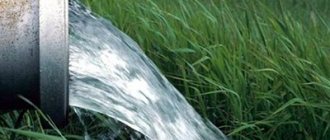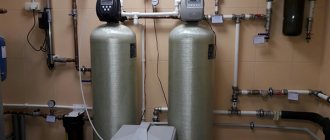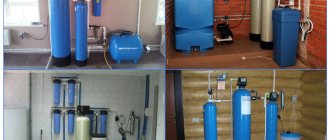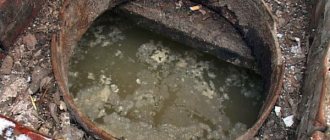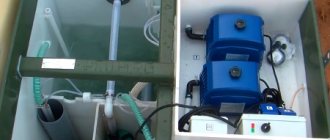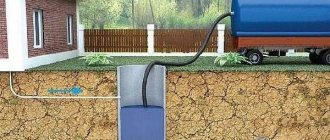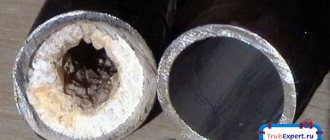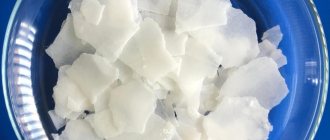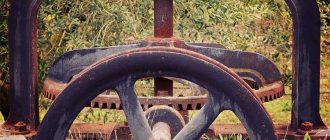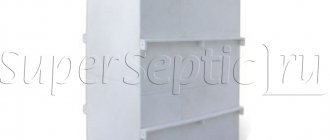The state of the natural environment depends on the degree of its pollution by human activity. Industrial enterprises, and in particular their wastewater, make a significant contribution to this.
Industrial wastewater treatment is a pressing problem, methods for solving which continue to develop. Modern treatment facilities are in many ways superior to their predecessors. This is largely due to the tightening of environmental legislation. Pollutant standards are becoming more stringent, and fines for non-compliance are becoming more expensive. This is why it is so important for even small businesses to take care of cleaning their drains.
You can get advice on selecting an industrial wastewater treatment system and purchase this equipment in Tyumen at.
Standards for the composition of industrial wastewater for discharge into sewers
Industrial wastewater discharged into the city sewerage system must comply with the standards of the local wastewater operator (city water utility). Most often, such requirements are established depending on the condition of city wastewater treatment facilities. They may be sensitive to the composition of the effluent. Indeed, in many factories, wastewater contains substances that can cause corrosion or destruction of pipelines and equipment.
Wastewater treatment plant for a small enterprise
Industrial waters that are discharged into the centralized sewer system must not violate the following requirements:
- the water should not contain abrasive materials that can form sediment in the pipes and damage them;
- wastewater should not contain substances that are aggressive to equipment materials (strong acids and alkalis);
- there should be no explosive or radioactive substances in the wastewater;
- the water temperature should not exceed 40 degrees Celsius;
- The pH should be between 6.5 and 8.5.
MPC requirements for industrial wastewater discharge
When discharging wastewater directly into a water body, it is necessary to be guided by the standard number GN 2.1.5.1315-03. It defines maximum permissible concentrations of substances, exceeding which will cause irreparable harm to the flora and fauna of the reservoir (and will also lead to inspections and fines). The most important values are presented in the table.
MPC values for wastewater discharge into water bodies
| Substance | MPC, mg/l |
| Suspended solids | 30 |
| Chlorides | 350 |
| Iron | 0,3 |
| Zinc | 1 |
| Sulfates | 500 |
| Phenols | 0,1 |
| Ammonium | 1,5 |
Agricultural-industrial and livestock complexes most often have excesses in phenols and oils, and automobile plants – in metals and petroleum products.
When industrial water pollution exceeds the specified values, wastewater treatment facilities are installed.
Types of industrial wastewater pollution
Industrial water pollutants differ in their state of aggregation, size, and chemical inertness. In order to most correctly select the method of industrial water purification, the following classification is used:
- coarse suspended impurities;
- emulsified impurities;
- fine particles;
- emulsions;
- metals;
- organic substances (organics);
- Surfactants and APAS.
Discharge of contaminated wastewater into a reservoir
Methods for treating industrial wastewater. How industrial wastewater is treated
Various methods are used to remove contaminants from industrial wastewater. The choice of purification method depends on the initial composition of the water and its required quality after purification. If there are several pollutants, combined methods are used. The main methods for removing impurities:
- Mechanical - straining, settling, filtration.
- Chemical – neutralization, flocculation, neutralization.
- Physico-chemical – flotation and stripping.
The most popular cleaning method is settling, but it has its drawbacks - for example, the long duration of the process of removing impurities and the relatively low percentage of removal of harmful substances (50-70% is already considered a good indicator). Flotation is a more effective, but at the same time expensive solution. The cleaning efficiency of this method, if the technology is followed, can reach 98%.
Reagent treatment significantly increases purification rates - up to 100% of mechanical impurities and up to 99.5% of emulsions and petroleum products. The disadvantage of this method is the high cost and complexity of maintaining the treatment plant. Reagent-free coagulation is used to remove metals and their oxides.
Stripping or desorption are the main ways to combat dissolved gases and surfactants. To remove detergents from water, combined methods are used - this can be ion exchange, extraction, coagulation, adsorption, destructive destruction, foam separation and/or chemical precipitation. The optimal combination is selected taking into account the composition of the initial wastewater and the requirements for it.
Wastewater from pickling lines and galvanic production is subjected to reagent treatment, which can reduce alkalinity or acidity, precipitate and coagulate heavy metal salts. Depending on the production capacity, diluted and concentrated solutions are either mixed and then neutralized, clarified, or the solutions are neutralized (separately) and clarified in different concentrations.
Purification of industrial wastewater by changing its chemical composition
The chemical and physical composition of wastewater is determined by a set of methods at each stage of water treatment. Some stages can be excluded in the absence of certain contaminants. Purification of industrial wastewater by changing its chemical composition involves:
- purification accompanied by the formation of sparingly soluble electrolytes;
- purification accompanied by the formation of complex or slightly dissociated compounds;
- purification through the process of decomposition and synthesis;
- cleaning by thermolysis;
- purification in redox, electrochemical processes.
Application of biological methods for purification of industrial wastewater
When deciding on the advisability of using biological treatment of wastewater from enterprises, it is necessary to take into account such a point as the presence of pollutants in wastewater that are prone to biochemical destruction. The cleaning efficiency is also influenced by the following factors: the presence of toxic substances, the level of biomass nutrition, the structure of impurities, nutrients, active reaction of the environment, increased mineralization. That is, bioremediation is used only for those wastewater that meet fairly strict criteria.
In what case can industrial waste be discharged into the general city sewerage system without hindrance?
Wastewater from industrial enterprises almost always contains various impurities that negatively affect the performance of the sewer network, urban wastewater treatment plants of a populated area, and reservoirs (if discharged into them). Therefore, before the start of cleaning, the content of the maximum permissible concentration of harmful impurities is monitored. Enterprises need to use waste-free and low-waste technologies, recycling and reuse water supply systems.
Types of wastewater
Based on the composition of contaminants, wastewater from enterprises is divided into three groups:
- Inorganic waste;
- Wastewater with organic matter;
- A mixture of inorganic and organic contaminants.
The first group includes industrial wastewater from factories that produce soda, sulfates and nitrogen compounds, as well as those using metals, alkalis and acids in their technology.
The second group includes enterprises of the food industry, organic synthesis and oil refineries.
The third group is electroplating and textile production, where acids and alkalis are combined with metals, organic dyes or oils.
Methods of wastewater treatment
Industrial wastewater treatment methods are divided into groups according to their operating principle:
- mechanical methods;
- chemical methods;
- physical and chemical methods;
- biological methods.
Mechanical treatment methods make it possible to remove large solid particles from industrial wastewater. They allow you to purify water from at least half of the mineral insoluble particles.
Chemical methods are based on the introduction of reagents into the flow that convert substances dissolved in industrial water into an insoluble state.
Physicochemical methods combine the action of physical forces with chemical reactions. Thanks to them, the remains of inorganic substances are removed and organic contaminants are broken down.
Biological treatment allows you to rid wastewater of organic matter and reduce BOD and COD values.
Scheme of wastewater treatment of the enterprise
Mechanical cleaning methods
Mechanical methods include settling and filtration. Such equipment is very effective in relation to suspended matter. Mechanical cleaning is most often the first stage of cleaning and is complemented by other types of facilities.
Schematic diagram of a radial settling tank
Settlement occurs in sand traps and settling tanks. In these structures, under the influence of gravity, large particles settle to the bottom and are removed.
It is important to ensure that no organic sedimentation occurs at this stage. Organic substances in the sludge of sand traps and settling tanks indicate the poor quality of treatment facilities and, during further processing, cause rotting.
In filtration, water passes through a mesh or porous media. Contaminants are retained in the pores or cells, and clean water flows to the next structure.
Chemical wastewater treatment
Chemical cleaning is carried out using reactor tanks, where the waste and reagent are mixed. It is based on the following interactions:
- redox processes;
- electrolysis or thermolysis;
- synthesis and disintegration;
- formation of insoluble compounds.
Methods of purification of physical and chemical nature
The most popular types are coagulation, flocculation, flotation, sorption and ion exchange. Extraction and evaporation are used less frequently.
These methods of treating industrial wastewater only work under certain conditions. Therefore, in the scheme of treatment facilities, equipment of this type of treatment is most often placed after mechanical and chemical methods, when there is significantly less contaminants in the water.
Froth flotation unit
Biological treatment methods
Biological treatment involves the absorption of organic substances by microorganisms. In specialized containers where water is kept for a long time, organic matter is oxidized and mineralized under the influence of aerobes living in the volume of the structure. Aerobes are microorganisms that live and thrive when supplied with oxygen.
For biological methods, aeration tanks, oxygen tanks, and biofilters are used. These structures differ in the type of microorganisms: biofilm in biofilters and activated sludge in aeration tanks and oxytanks.
Categories of drains
Industrial manufacturing processes require liquid. As a result, industrial wastewater is generated. The liquid comes into contact with sources of contamination: chemicals, solids, gases. At the same time, it loses its natural properties and needs to be cleaned for recycling or disposal. Based on the technological process that is the source of pollution, categories of EPS are distinguished.
Industrial wastewater
This type of EPS is formed directly during production. In industrial enterprises, the flow occurs constantly, which explains the need for systematic accounting of wastewater.
Common types:
- Industrial condensate.
- Solutions of galvanic or pickling baths.
- Soda solutions.
- Ammonia solutions.
- Food colorings.
- Toxic components.
Auxiliary system drains
They have an environmentally friendly composition. EPS of auxiliary industrial systems do not contain toxic components. The liquid was obtained as a result of the operation of additional buildings at an industrial enterprise.
Examples of auxiliary system drains:
- Drains from showers, restrooms, dining rooms.
- Water in heating installations.
- Cooling unit drains.
Water from utility and service workshops
This category includes wastewater generated as a result of the operation of administrative buildings, utility shops, and material warehouses. Potential sources of pollution include mechanical repair shops and electrical shops.
Treatment plants
Most often, treatment facilities look like a system of sealed tanks and pipelines, compactly located on the production site. In addition to the structures themselves, an access road and sediment and excess silt treatment facilities are being designed.
The design of wastewater treatment facilities is carried out individually for each enterprise, depending on the volume of wastewater and its contamination. A well-designed cleaning scheme reduces the concentration of contaminants in the drain to minimum levels.
Treatment facilities of a large enterprise
